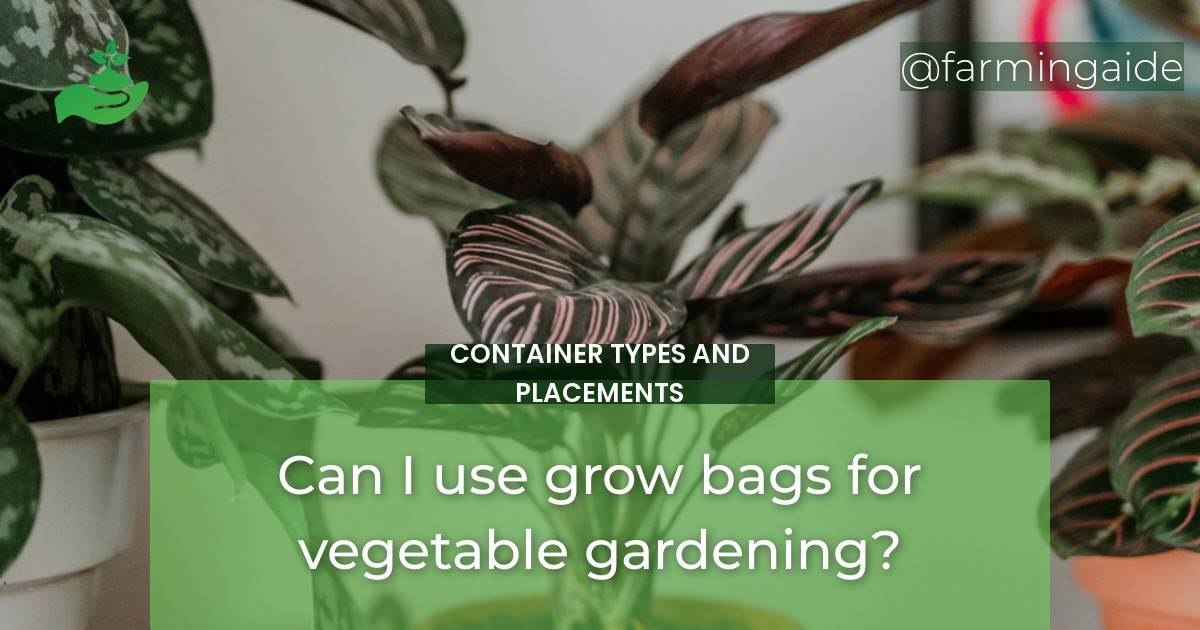Using Grow Bags for Vegetable Gardening
Introduction
Gardening is a popular hobby and can be done in different ways and using different containers including grow bags. The use of grow bags for vegetable gardening is a relatively new concept and has been gaining popularity because of its numerous advantages. In this article, we will explore the different aspects of using grow bags for vegetable gardening and answer the question, Can I use grow bags for vegetable gardening?
Grow Bags vs. Traditional Containers
What are grow bags?
Grow bags are containers made from different materials, including fabric, plastic, and burlap. They are designed to be lightweight, portable, and easy to use for growing different types of plants, including vegetables.
Advantages of using grow bags
- Easy to move around
- Lightweight and portable
- Require less space
- Can be used in small spaces such as balconies and patios
- Can be used to grow a variety of plants including vegetables, fruits, and herbs
Differences between grow bags and traditional containers
- Grow bags are lightweight and portable whereas traditional containers are often heavy and not easily moveable
- Traditional containers are often made from materials such as clay, ceramic, and plastic whereas grow bags are made from materials such as fabric and burlap
- Grow bags are often cheaper than traditional containers
- Grow bags require less space than traditional containers
Potential disadvantages of grow bags
- They may dry out quickly, especially in hot weather
- They may not be as durable as traditional containers
- May not be suitable for all plant types
ALSO READ
Choosing the Right Grow Bags
Material types
Grow bags are made from different materials, including fabric, plastic, and burlap. Fabric grow bags are the most popular because they are breathable and allow for air circulation and better root growth. Plastic grow bags are not breathable but are more durable and can last longer than fabric grow bags. Burlap grow bags are also breathable but may not be as durable as fabric grow bags.
Sizes and shapes
Grow bags come in different sizes and shapes, including round, square, and rectangular. The size of the grow bag will depend on the type of plant you want to grow. A larger grow bag is suitable for plants with deep roots, while a smaller grow bag is suitable for plants with shallow roots.
Drainage and aeration considerations
Grow bags need to have proper drainage and aeration to avoid waterlogging and root rot. Choose a grow bag with drainage holes at the bottom to allow excess water to drain out and ensure proper aeration. Also, consider placing the grow bags on a raised surface to prevent waterlogging.
Preparing Grow Bags for Planting
Filling the bags with soil
Fill the grow bags with a good quality potting mix that is suitable for growing vegetables. Leave some space at the top of the grow bag to allow for watering.
Adding fertilizers and nutrients
Vegetable plants require nutrients for healthy growth. Add organic fertilizers and nutrients to the potting mix before planting to provide the necessary nutrients for your plants.
Watering and drainage considerations
Proper watering is essential for the growth of your plants in grow bags. Water your plants regularly, but do not overwater. Ensure that the grow bags have proper drainage to prevent waterlogging and root rot.
Choosing the right location for your grow bags
Choose a location that receives enough sunlight for your plants to grow. Also, ensure that the location is easily accessible for watering and monitoring your plants.
ALSO READ
What Vegetables Can Be Grown in Grow Bags?
Root vegetables
- Carrots
- Radish
- Beets
- Potatoes
Leafy greens
- Spinach
- Lettuce
- Kale
- Arugula
Fruiting vegetables
- Tomatoes
- Peppers
- Eggplant
- Cucumbers
Herbs
- Basil
- Cilantro
- Mint
- Parsley
Maintenance and Care of Grow Bags
Watering and fertilizing plants in grow bags
Water your plants regularly but do not overwater. Ensure that the grow bags have proper drainage to prevent waterlogging and root rot. Fertilize your plants regularly with organic fertilizers to provide the necessary nutrients for healthy growth.
Pest and disease management in grow bags
Inspect your plants regularly for pests and diseases. Use organic pest control methods such as neem oil and insecticidal soap to control pests. Remove any infected plants to prevent the spread of diseases.
Harvesting and replanting
Harvest your vegetables when they are ripe. Remove any dead or diseased plants and replant with new plants to maintain a healthy garden.
Can I Use Grow Bags to Grow Fragrant Perennial Flowers in my Garden?
Yes, you can use grow bags to create a fragrant perennial flowers oasis in your garden. Grow bags are a versatile option for growing a variety of plants, including fragrant perennials. These portable containers provide good drainage and aeration, making them ideal for growing flowers with strong scents.
Conclusion
Grow bags are an excellent alternative to traditional containers for vegetable gardening. They are lightweight, portable, and easy to use. However, they may not be suitable for all plant types and may dry out quickly in hot weather. Choosing the right grow bags, filling them with the right soil, and providing proper care and maintenance can result in a successful vegetable garden using grow bags.


